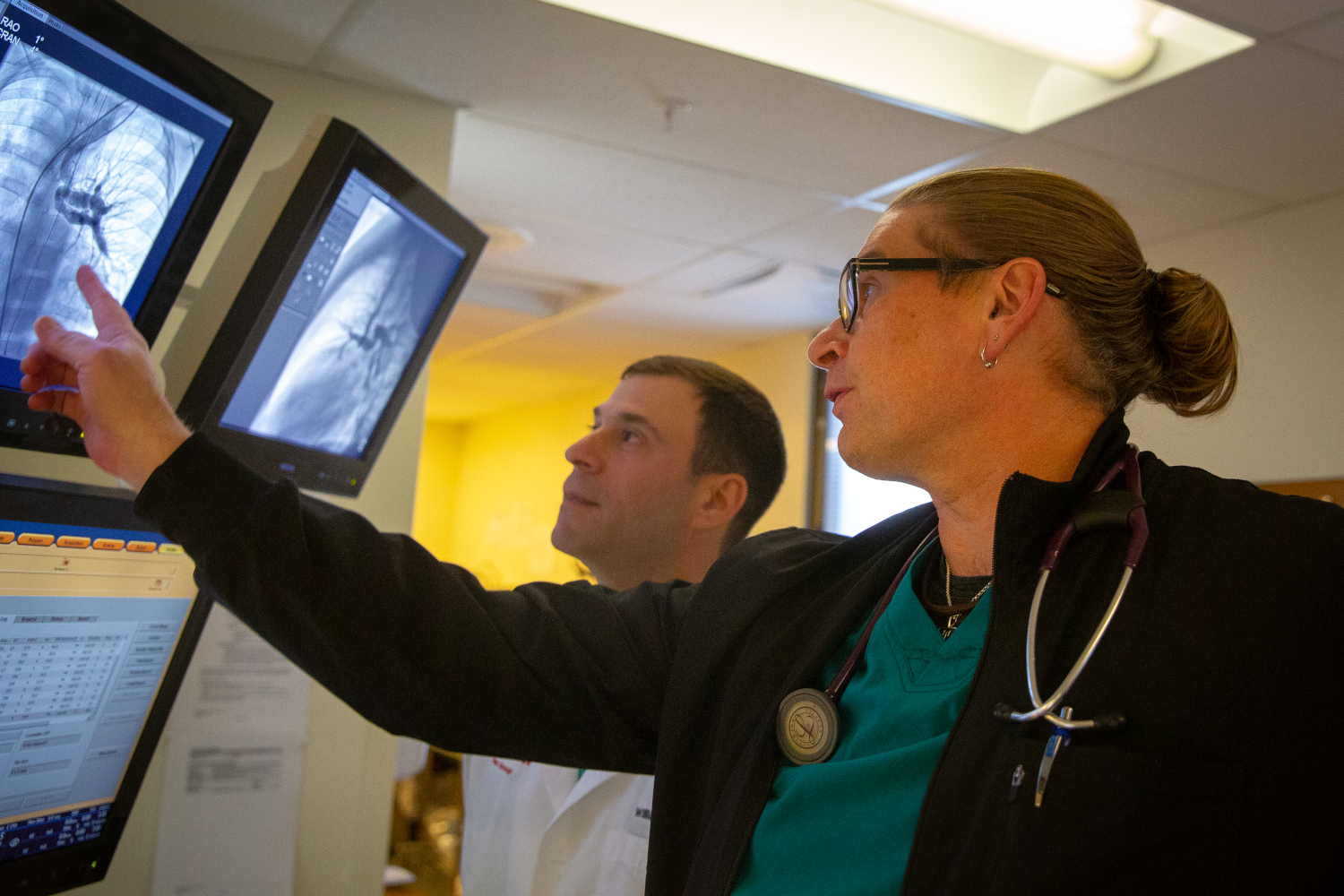By Mariah Baca, Bradley Eversgerd, Barbra Ramirez and Elizabeth Secor
State lawmakers approved several measures designed to improve healthcare access and affordability this session and Gov. Michelle Lujan Grisham signed seven of them at a hospital in Truth or Consequences March 1.
“Delivering quality healthcare to New Mexico’s population requires a tailored approach that takes into account rural communities, New Mexicans benefiting from Medicaid, and the tens of thousands of public employees in our state,” Gov. Lujan Grisham said in a release. “These are bills that are going to positively impact a vast swath of New Mexicans.”
With $3.5 billion in “new money,” on the table, lawmakers made several investments in healthcare during the 2024 legislative session.
In 2020, New Mexico ranked 38th in the nation for healthcare overall and 43rd for healthcare access, according to U.S. News. Nearly 15% of the state’s population lacks health insurance, while the national average is 12.2%.

Though the state has made strides, more than 80 percent of New Mexicans said they worry about affording healthcare, according to a 2021 survey.
“We are, unfortunately, one of the states with the highest poverty levels, so our ability to provide healthcare as a state is complex—and yet the needs are greater,” said Barbara K. Webber the executive director of Health Action New Mexico, during an interview at the Roundhouse.
Healthcare Affordability Fund gets a dedicated stream of money
The Health Care Affordability Fund was established in 2021 to make health insurance cheaper for individuals and businesses.
HB 7 earmarks 55% of the money the state brings in through the premium surtax for the Health Care Affordability fund, which the state says has served over 6,000 small businesses and 41,000 employees save $45 million on health insurance premiums.
A stable source of revenue for the program is important, said Gabriella Rivera, Policy and Communications Director for Health Action New Mexico. “We as health care advocates want it to stay up to a level where we know 55% is gonna go to these health care programs and not be eaten into other things,” she said during an interview at the Roundhouse.
The bill will reduce premiums to zero for Native American residents, with the goal of bringing more of them into the state healthcare system rather than Indian Health Services, which doesn’t cover specialty care, Webber said.
“House Bill 7 will sustain the Healthcare Affordability Fund so that workers continue to get the coverage they need, small businesses can offer the benefits their employees deserve, and we can keep cutting New Mexico’s uninsured rate, which will reduce costs for everyone,” lead sponsor and House Majority Whip Reena Szczepanski, D-Santa Fe, said in a release.
Prescription Drug Transparency Act aims to lower drug prices
Under the Prescription Drug Price Transparency Act, entities in the supply chain will be required to open their books and report to the Superintendent of Insurance on profits, price increases, and negotiated rebates.
“What we need is more information to the public and to the decision makers as to how and why prices are escalating and what can be done,” Webber said.
HB 33, requires pharmaceutical companies, health insurance companies and pharmacy , health insurers, and pharmacy benefits managers to report prescription drug prices and trends.
According to recent poll conducted by Health Action New Mexico nearly half of New Mexicans said they hadn’t filled a prescription recently because of the cost, Webber said.
It’s important that the bill includes pharmacy benefit managers and pharmacy services, which entered the market 15-20 years ago but have since grown into a multi-billion-dollar industry, Webber added.
Other healthcare measures approved
Gov. Lujan Grisham also signed Senate Bill 14, which finalizes the state Health Care Authority. Effectively, the bill reorganizes several parts of governemtn into one department responsible for healthcare purchasing, oversight and policy.
“Building off our efforts last year to establish the Health Care Authority, this measure will now help in streamlining the collaboration between the Department of Health and the Health Care Authority in the sharing of data, and ultimately improve health care access and affordability across the state,” said cosponsor Sen. Liz Stefanics, D-Cerrillos.
According to a nonpartisan legislative analysis, “The Health Care Authority was established to better coordinate coverage and maximize state purchasing power. Bringing [health care affordability fund] programs under the same umbrella as Medicaid could create opportunities to better streamline coverage transitions and the continuum of care.”
Other measures the governor signed Friday include SB 17, Healthcare Delivery and Access Act, which creates a Medicaid Directed Payment Program designed to generate more than $1 billion in federal money to support rural healthcare.
SB 161, Acute Care Facilities Subsidies, will allow independent hospitals to apply for grants that will provide bridge funding until SB 17 kicks in.
HB 165, Pharmacy Provider Reimbursement and SB 135, Step Therapy Guidelines.
